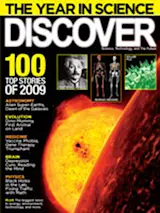If the rules of the tiny quantum world applied to ordinary objects, all sorts of strange things could happen: An object like a car or a person might be in two places at once, or two clocks could “entangle,” moving in synchrony as if they were physically conjoined even when miles apart. In June researchers at the National Institute of Standards and Technology (NIST) reported on their effort to see how far quantum behavior can be extended into the everyday realm.
First they coaxed a pair of beryllium ions to entangle, such that their physical properties remained bound together even when they were far apart. To do this, the scientists flashed lasers at a frequency that encouraged the ions to adopt complementary spin. Next the team split up the beryllium duo so that each was now matched with a magnesium ion, and those new pairs were moved to separate areas. ...














